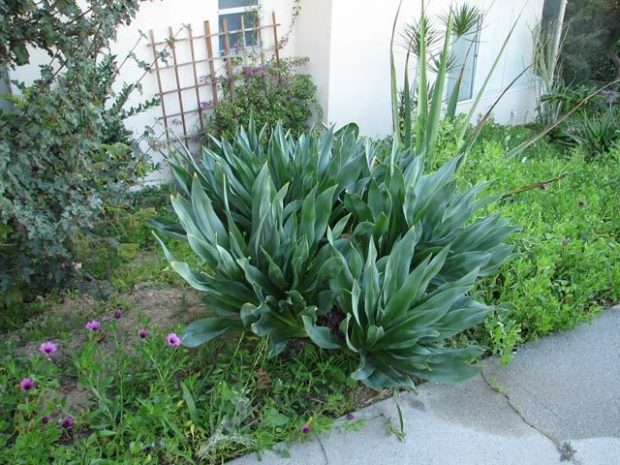Urginea Maritima refers to a species of flowering plant belonging to the family Asparagaceae and sub-family Scilloideae. It is also known; by various names such as sea onion, squill, sea squill, and maritime squill. However, sometimes the species is also termed red squill; due to the production of red-tinged flowers rather than white.
Urginea Maritima or Drimia Maritima is native to the regions of Europe, Western Asia, and Northern Africa. The growth of this plant begins from a large-sized bulb. Each Urginea bulb in the spring can produce a rosette consisting of around ten leaves, each sized up to a meter long. They are leathery in texture and dark green in color. This species has two different kinds of pollination syndromes, that is, entomophily and anemophily. It is pollinated; by wind and insects. The list of some insect pollinators includes the western honey-bee, Oriental hornet, and the Paper Wasp species.
Urginea Maritima Uses
The Urginea Maritima plant offers several uses, both as a poison and as a medicinal cure. This plant contains broad leaves, which, when completely dry, are consumed by sheep and cattle. Arab peasants in Palestine are known to have used the plant for marking butts and bounds of farmland to consider the plant’s distinct features.
Urginea Maritima has been used since ancient times. Well-known names like Pythagoras, Hippocrates, and Theophrastus have also highlighted its significance. Hippocrates was the person who used this plant species to treat asthma, jaundice, and convulsions. It is also used; as a laxative, expectorant, and treatment of edema.
Not only that, but it also offers ornamental purposes, that is, cutting flowers in the floristry. As a poison, it kills rats, as an insecticide against pests such as red flour beetles.
Urginea Maritima Care
While planting a Urginea bulb, it is essential to place it in such a way as to make it partially visible above the soil. Bulbs are placed 60 cm apart from each other to allow their spreading throughout. After plantation, watering should be the next thing to pay attention to promote a healthy root system.
However, watering the plant alone is not sufficient, but some more aspects are also held accountable to help the plant remain alive. The foliage, during the summers, begins to turn yellow and die consequently. If any yellow foliage is visible, remove those leaves to keep the overall plant neat and clean. While watering during its active growth, remember to keep the soil damp but not too moist. After the blooming, trim the flower stalks off to help them grow new and better for the upcoming season.
Urginea Maritima Growing
This flowering plant usually grows in rocky coastal habitats, especially in the Mediterranean Basin. It can occur in many different habitats, with the exclusion of the driest deserts. It can grow in both open and shady areas. The growing conditions of this plant require a well-drained soil of loam or sand within an acidic, neutral or basic pH. Urginea plant is best suited to flower borders and beds within an informal garden setup. When it comes to their position, it should be set such that the plant receives full sunlight in a sheltered area.
The growth of this plant commences from a bulb sized approximately 20 cm (7.9 in) wide and weighs 1 kg (2.2 lb). The flower size of a Urginea plant is up to 1.5 cm (0.59 in) wide, each having six sepals present along with a dark stripe in the center.
Urginea Maritima Problems
Though the Urginea Maritima plant is super easy-to-grow, some problems may be associated with this plant. Now, what are those problems? The main problem experienced by this plant is overwatering. It grows best with consistent and moderate moisture. Remember not to allow the plant to sit in water, allowing the soil to dry up readily between the watering phase. If the stalks appear dry after blooming during the late summer, stop the watering. At this point, stems can be cut-off, and watering the plant may be resumed when the bulb re-sprouts.
Its seeds are propagated easily; however, it takes five years to produce flowers. This plant does not need any specific fertilizers to pursue its growth. Also, the Urginea Maritima plant is sensitive to irrigation. These plants are known to be rustic plants capable of growing in almost all kinds of soil present, as they resist drought conditions well.



